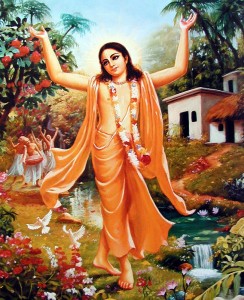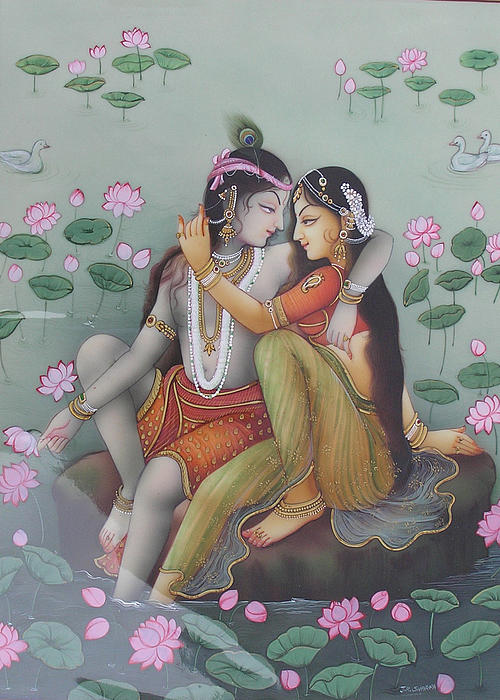Gaudiya Vaishanvism, also known as Bengali Vaishnavism, is a mystical theistic tradition which originated with the advent and teachings of Caitanya Mahaprabhu (1486-1533) in Bengal, India. The term “vaishnavism” refers to the broader cluster of Indian bhakti (devotional) traditions centered on the worship of Vishnu or any of his avatars or incarnations as the Supreme Being. As a branch of Vaishnavism, the Gaudiya tradition emphasizes the personal nature of God and bhakti yoga (the path of union with God through love and devotional service).
The distinctive beliefs of the Gaudiya tradition include the belief that (i) Krishna is the original form of the Godhead, not merely an avatar (or incarnation) of the Supreme Being Vishnu, (ii) bhakti, properly cultivated, results intimacy with God, the highest form of which is the ecstatic enjoyment of conjugal love (madhurya rasa), (iii) Radha, the highest devotee of Krishna in the Krishna narrative, is herself God in the mode of sacrificial love, (iv) although God manifests in many different forms, Caitanya is the manifestation of Radha-Krishna (lover and beloved) in one body, expressing the highest form of bhakti for this age as the chanting and singing of the holy names of God, and (v) the relation between God and the individual soul is an inconceivable simultaneous difference and non-difference (acintya bhedabheda tattva).
As a form of Vedanta, Gaudiya Vaishanvism maintains that God is sat-chit-ananda (being-consciousness-bliss). The Gaudiya tradition acknowledges both an impersonal aspect to God (Brahman) and an all-pervading aspect by which he is wholly immanent to all things (Paramatma). Sat-chit-ananda, however, is most perfectly manifested in God as Bhagavan (the bearer of auspicious attributes), God as a personal being whose will is pure ananda or bliss. Hence, the Absolute may also be spoken of as Radha-Krishna, the complementary personal aspects of the Absolute, whose love relation to the world is represented by the aesthetic rapture or sweet amorous love relation (madhurya rasa) between Krishna and his highest devotee Radha.
The concept of God in Gaudiya Vedanta significantly differs from the Advaita Vedanta tradition systematized by Adi Sankara in the late 8th/early 9th century CE. The Advaita tradition is a monistic tradition that maintains the ultimate non-duality of reality and hence that the personal aspect of the Absolute is only a provisional manifestation of what is ultimately formless Brahman (nirguna Brahman). Western views of so-called “Hinduism” are often filtered through a theological perspective shaped by the monistic metaphysics of Advaita Vedanta. As a result of the influence of Swami Vivekananda, who introduced this Advaita conception of God to the west near the end of the 19th century, the personalism of many of the devotional streams of Indian religion, especially Vaishnavism, was not adequately acknowledged in western scholarship until the second half of the 20th century. In 1965 AC Bhaktivedanta Swami Prabhupada arrived in America and introduced the personalism of the Gaudiya tradition to America with the founding of the International Society for Krishna Consciousness, more popularly known as the “Hare Krishna” movement.
Featured Article: Steven Rosen, “Vaishnavism”
Featured Article: Steven Rosen, “The Meaning of Gaudiya Vaishnavism”




 Follow
Follow